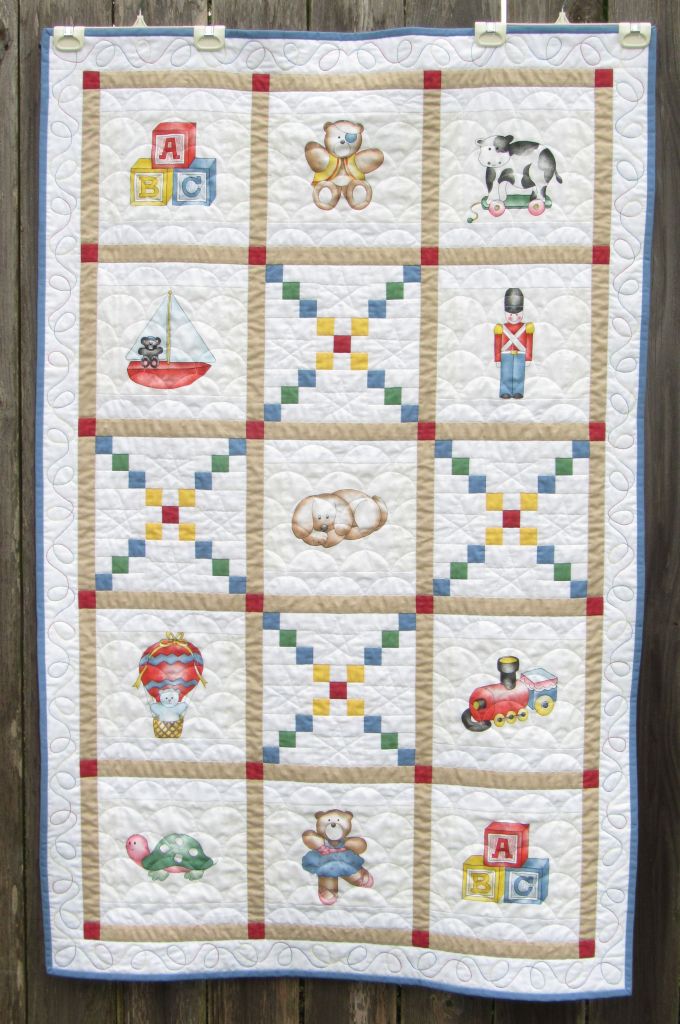Here’s the quilt for the newest member of the family and part two of my previous post titled Legacy and Heirlooms.

It felt incomplete to hand down bumper pads and a crib skirt with no quilt, so I dug out the leftover nursery fabrics and scanned everything into Electric Quilt in preparation for creating a layout.
There was enough of the main print in the collection to feature prominently in the layout, although I was bothered about having to build out each fabric image to get to a 9-inch block size.

Also disappointing was that the border dots around each image were not available on all the scraps so it wouldn’t show in the final blocks.

There wasn’t enough of the two coordinating prints to make a cohesive-looking layout, so

I revised it to incorporate solids into the chain blocks. But what about sashing color?
John suggested gray. Then it dawned on me that instead of gray, a taupe color would be perfect, picking up the taupe used in the bears and the dog.

Three of the five colors were in my stash,

but I had no taupe and could not find a suitable red – a trip to the quilt store was in my future. I wasn’t excited about having to buy more fabric, but I wouldn’t need much and besides, you can justify almost anything when it’s for a new baby.

I was lucky to find a one-yard cut of matching white in my stash for the chain blocks and border which, despite its diminutive size, had to be pieced in five places. It was close and cutting mistakes were not an option.

Chain block construction took a lot of time because of the one-inch finished square size and the fact that they were not strip pieced.

To conserve fabric, I eliminated seams in the corner units.

The backing fabric is the same multi-colored pin stripe I used for The Bias Tape quilt.

This project was heavily quilted to help it survive countless washings, tugging, pulling, bunching and dragging: in the ditch with the walking foot, followed by free motion quilting elsewhere. The clam shell motif was added to the image blocks; it was fun and easy to quilt and provided sufficient coverage.

Five-pointed stars were quilted inside the chain blocks.

I struggled with the border quilting, walking away from the project for about 10 days out of frustration. I had the perfect thread (the wrapper even says so), a 17-weight, 100 percent cotton variegated in primary colors from Superior Threads. Oh, the tension issues!

I wanted to use cream colored thread in the bobbin and tried 50-, 40-, and 28-weight, each to no avail. In the end, my sense was that the difference between the weight of the two threads was too large to ever resolve any tension issues. I begrudgingly loaded a bobbin with the variegated thread and finished the quilting. I wasn’t thrilled with the way it looked on the back, but baby needed variegated thread! so I had to make it work.

I’m pleased to add my contribution to the crib set that my mother made 30 years ago. I truly hope that the quilt becomes a favorite and will be used and loved. If not, maybe it will become a favorite for a little someone in the next generation.

Next: Crib sheets


















































